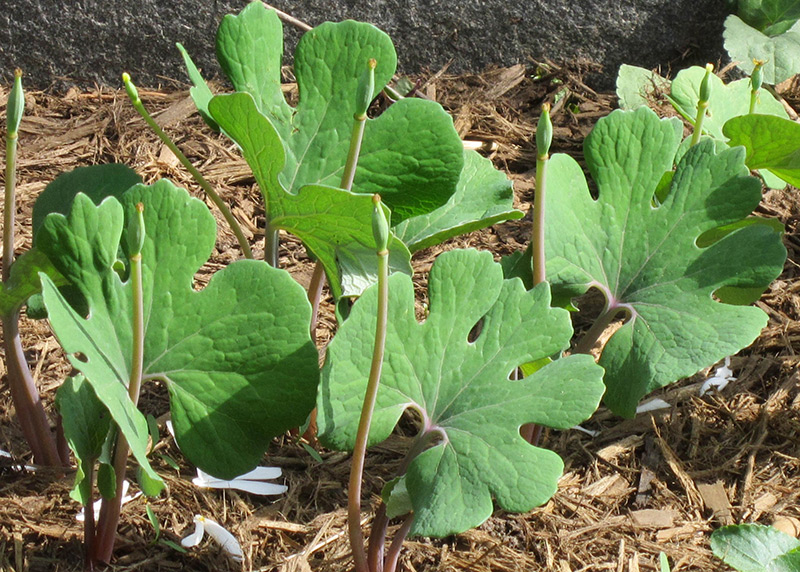Plants We Love: Sanguinaria Canadensis (Bloodroot)
A walk through an eastern woodland in early spring is a treasure hunt for me. Only in this short window of time, before deciduous trees leaf out and while the sun still reaches the forest floor, does one have the opportunity to discover the fleeting blooms of our native spring ephemerals.

This weekend, I spied some of the earliest of these, a happy colony of Bloodroot, its blossoms grouped in a gleaming white bouquet.
Bloodroot’s flower buds emerge in early spring wrapped tightly in a leaf that shares their same stem and that may help to trap warmth. The showy clear white blossoms with yellow stamens open in the sun and close at night. Bloodroot’s large leaves fully unfurl after the flowers fade. The leaves are strongly textural with deep clefts, and they in turn disappear in mid-summer when bright sunlight no longer reaches the forest floor. The metaphorical common name derives from the reddish sap exuded by the roots and stems of the plant when cut.
Last spring, OvS planted Bloodroot in several of our projects, tucking the low plants close to woodland paths amongst a richly textured groundplane of ferns and sedges like Dryopteris marginalis and Carex plantaginea that fill in as Bloodroot goes dormant. This spring, I am thrilled to watch as these delicate woodland beauties have their day in the sun.
Native Range: Eastern North America
USDA Hardiness: zones 3-8
Height: 6”-9”
Growing Conditions: Moderate to full shade; moist, well-drained soils
